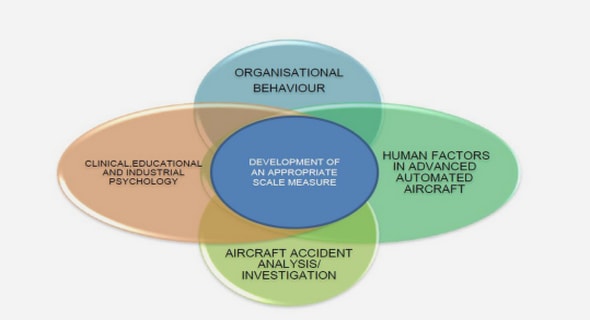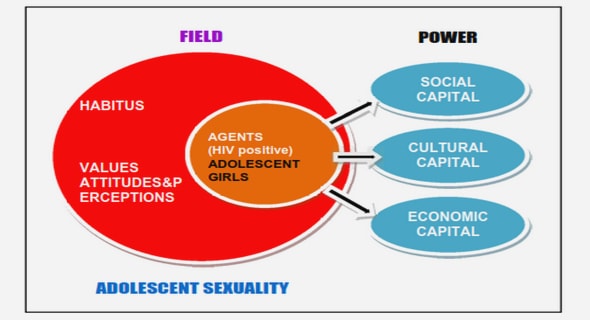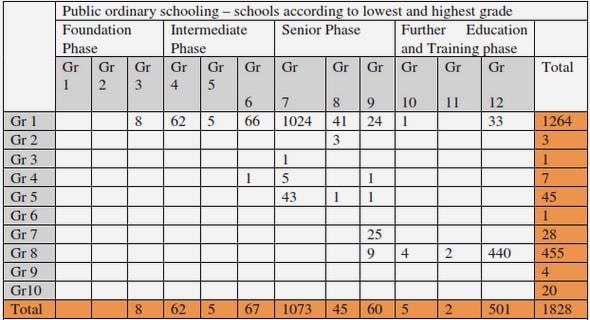Get Complete Project Material File(s) Now! »
CHAPTER 3 STRUCTURE–ACTIVITY RELATIONSHIP
Introduction
The objective of this chapter is to explore the use of the analogues of AFGP8 previously synthesised as ice growth habit modifiers. A range of techniques was applied to learn about the conformation of these analogues and the way they interact with ice as well as the antifreeze activity that they induce. The shape of the ice crystals formed in the presence of the analogues in solution was observed using a nanolitre osmometer device. The same experiment allowed determination of an eventual thermal hysteresis, and its quantification. A simple method based on NMR measurement during melting of a frozen solution of AFGP analogues was also used to qualitatively characterise the adsorption of AFGP analogues onto ice. The technique looked at the evolution of the water resonance during the melting of a previously frozen solution of the AFGP analogues. The results were compared with the effect of small molecules on ice such as alanine, sugars, salts or a small peptide. CD spectroscopy was also used to probe the change in solution conformation induced by changes in the structure of the AFGP8 analogues. Extrapolation of these results gave some crucial information about the binding mechanism of AFGPs analogues onto ice, the effect of structure modification on the conformation and resulting properties of the analogues, and the structure-activity relationship of the AFGPs in general.
Experimental
NMR Kinetic Melting Experiment
1H NMR spectra were recorded on a Bruker DRX spectrometer operating at a 1H frequency of 400 MHz. Chemical shifts (δ) were expressed in parts per million and TMS in deuterated chloroform served as an internal standard (δ = 0 ppm). The compounds to study were dissolved in distilled water at comparable molar concentration (see Table 3.1 in Section 3.3.1) then placed into a 3 mm diameter NMR Norell-400 tube. The temperature of the NMR probe was calibrated using deuterated methanol following the method described by Findeisen et al.134 For flash-frozen samples, the sample tube was supercooled to -3 °C, then plunged into liquid nitrogen before being left to equilibrate at -3 °C for 30 min. For slow-frozen sample preparation, the solution was flash-frozen and then slowly melted at room temperature until only a single tiny crystal remained in the tube. Slow freezing was then undertaken by leaving the tube in a bath at -3 °C for 30 min. The sample tube was then fitted into a 5 mm diameter NMR Norell-400 tube containing CDCl3 with TMS previously stabilised at -3 °C. Samples were inserted into the instrument which was equilibrated at -3 °C and left for 10 min to allow temperature stabilisation. Locking and shimming were performed using the external CDCl3 signal. A few one-dimensional (1D) 1H NMR experiments were run at this point to confirm that the system has reached equilibrium. Once equilibrium was reached, the temperature was set to 0.2 °C to slowly melt the sample. Standard 1D 1H NMR measurements were subsequently acquired every 52 s to follow the evolution of the NMR spectrum during melting of the sample. Automatic shimming on z1 and z2 shims was used as the sample melted. Full spectra, including time scale, are provided in Chapter 12
Circular Dichroism Analysis
CD analysis was carried out on an Applied Photophysics Pi-Star 180. All measurements were performed at room temperature in quartz cells of 1 cm path length. Spectra were obtained with a 1 nm bandwidth and 64 scans were combined to improve the signal-to-noise ratio. A baseline correction was made for each sample and all spectra were recorded between 190 and 260 nm. The analogue concentration used was 4 μmol.L–1. Molar residual ellipticity (θ) was calculated in degree.cm2.dmol–1.
Crystal Growth Morphology Observation
Direct observation of ice crystal growth was performed using a microscope equipped with a nanolitre freezing point osmometer (Otago Osmometers, Dunedin, NZ) (Figure 3.1). The setup included a JCV TK-1281 Color Video Camera used to record the ice crystal images. The sample wells of the temperature-controlled osmometer stage were filled with oil (Cargille’s A) into which a small aliquot (~20 nL) of the sample was injected using a micropipette attached to a Gilmont micrometer syringe. The sample solution was rapidly frozen and then slowly warmed until a single ice crystal remained. The temperature was then slowly and carefully decreased in order to observe the growth of the crystal. Observation of the crystal morphology and the lack or presence of a thermal hysteresis was noted and recorded on video. Thermal hysteresis is defined in this thesis as the difference between the melting and freezing points of a solution when there is no observable ice crystal growth over at least one hour. Each experiment was repeated at least twice to ensure reproducibility of the results. Thermal hysteresis measurements were repeated N times, the values reported in this thesis are averaged values and are given along with their corresponding standard deviation and number of experiments conducted for this sample (e.g. thermal hysteresis = 0.15 °C (± 0.07 °C, N = 4)). Calibration of the nanolitre freezing point osmometer was done using pure water and standard solutions of glucose and sodium chloride. The pH for each tested sample was measured to be between 6 and 8 and therefore no buffer was used except in the case of tricarballylic acid, where the solution (pH = 2) was corrected to pH = 7 using sodium hydroxide before the introduction of analogue 80.
Results
Demonstration of AFGP8/analogues adsorption onto ice by an NMR method
Observation of the water signal during the melting of pure ice showed a single peak at δ = 5.17 ppm, with the area of the signal increasing as the ice melted (Figure 3.2). The small difference observed between this chemical shift and the chemical shift of the water resonance once fully melted (δ = 5.14 ppm) is due to the temperature difference (-3 ºC at frozen state, 0.2 ºC at fully melted state) (Table 3.1). Observation of the water signal for a slow-frozen solution of alanine (100) and sodium citrate (101) (Figure 3.3) showed a resonance at δ = 5.28 ppm and δ = 5.48 ppm respectively (Figure 3.4, a, b). The difference between these chemical shifts and the resonance of pure water is due to the presence of the compounds which interact with the water. During melting, the water peaks grew and shifted to lower ppm as the solution melted and diluted (see Chapter 12). Observation of the water signal for a slow frozen solution of D-galactose (82) or D-N-acetyl-galactosamine (102) showed two resonances, one at δ = 5.17 ppm (which represents the signal for free water) and a second resonance at δ = 5.29 ppm or δ = 5.38 ppm (which represents the signal for water interacting with D-galactose or D-N-acetylgalactosamine respectively) (Figure 3.4, c, d). During melting, both the free water and interactive peaks grew but the interactive peak slowly shifts towards the free water peak. After 5 to 10 min, the two peaks averaged and only the free water peak grew (see Chapter 12).
CHAPTER 1: INTRODUCTION PART
1.1. Introduction
1.2. Classic growth of ice
1.3. Antifreeze proteins (AFPs) and antifreeze glycoproteins (AFGPs) in polar fishes
1.4. Different types of AF(G)Ps
1.5. Properties of AF(G)Ps
1.6. Conformation of AFGPs
1.7. Nature of the interactions between AFGPs and ice
1.8. Synthesis of native AFGPs
1.9. Synthesis of AFGP analogues
1.10. Outline of the present study
CHAPTER 2: SYNTHESIS OF ANTIFREEZE GLYCOPROTEIN ANALOGUES
2.1. Introduction
2.2. Synthesis of the building blocks
2.3. Synthesis of (glyco)peptide analogues
CHAPTER 3: STRUCTURE-ACTIVITY RELATIONSHIP
3.1. Introduction
3.2. Experimental
3.3. Results
3.4. Discussion
CHAPTER 4: EFFECT OF SMALL MOLECULES AS ADDITIONAL ADDITIVES
4.1. Introduction
4.2. Experimental
4.3. Results
4.4. Discussion
CHAPTER 5: CONCLUSION PART
PART 2: GROWTH HABIT MODIFICATION OF IRON AND IRON OXIDE
NANOPARTICLES USING PHOSPHOPEPTIDES
CHAPTER 6: INTRODUCTION PART
6.1. Introduction and metallic nanoparticles applications
6.2. Magnetic nanoparticles
6.3. Methods for preparation of metal and metal oxide nanoparticles
6.4. Additives for growth habit modification of metal and metal oxide nanoparticles
6.5. Modification of the growth habit of nanoparticles using peptides
6.6. Outline of the second part of this thesis
CHAPTER 7: DESIGN AND SYNTHESIS OF PHOSPHOPEPTIDE ANALOGUES
7.1. Introduction
7.2. Synthesis of (phospho)peptides
7.3. Corrosion inhibition measurement
CHAPTER 8: SYNTHESIS OF IRON OXIDE NANOPARTICLES
8.1. Introduction
8.2. Experimental
8.3. Results
8.4. Discussion
CHAPTER 9: SYNTHESIS OF CORE-SHELL IRON-IRON OXIDE NANOPARTICLES
9.1. Introduction
9.2. Experimental
9.3. Results
9.4. Discussion
CHAPTER 10: CONCLUSION AND FUTURE WORK
CHAPTER 11: EXPERIMENTAL
11.1. Experimental for Chapter
11.2. Experimental for Chapter
CHAPTER 12: APPENDIX
12.1. Representative NMR water signal evolution during the melting of the samples
12.2. RP-HPLC eluting profiles of phosphorylated peptide analogues
12.3. UV/Vis theoretical spectra for various complex stoichiometry
CHAPTER 13: REFERENCES
GET THE COMPLETE PROJECT
BIOMIMETIC MODIFICATION OF CRYSTAL GROWTH


